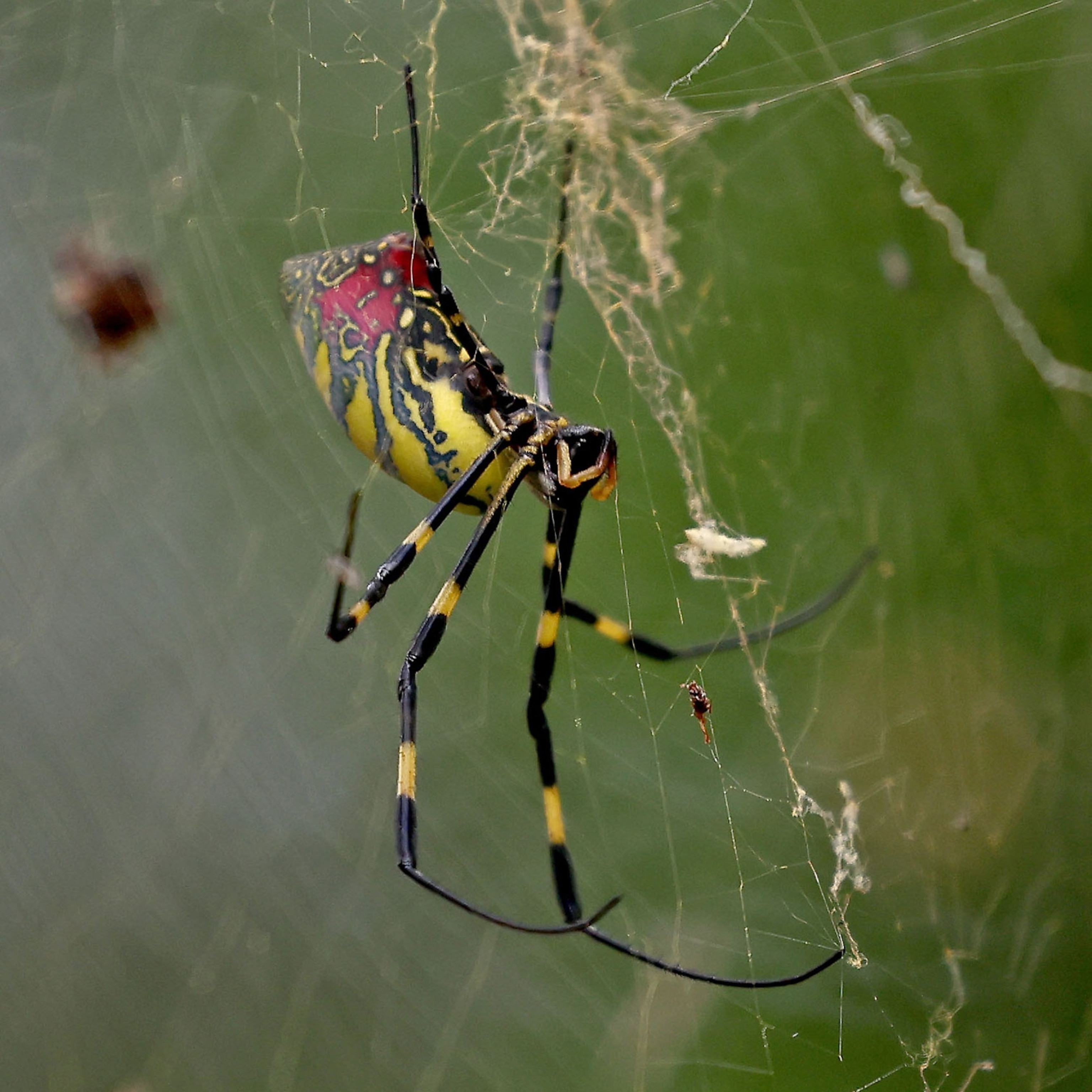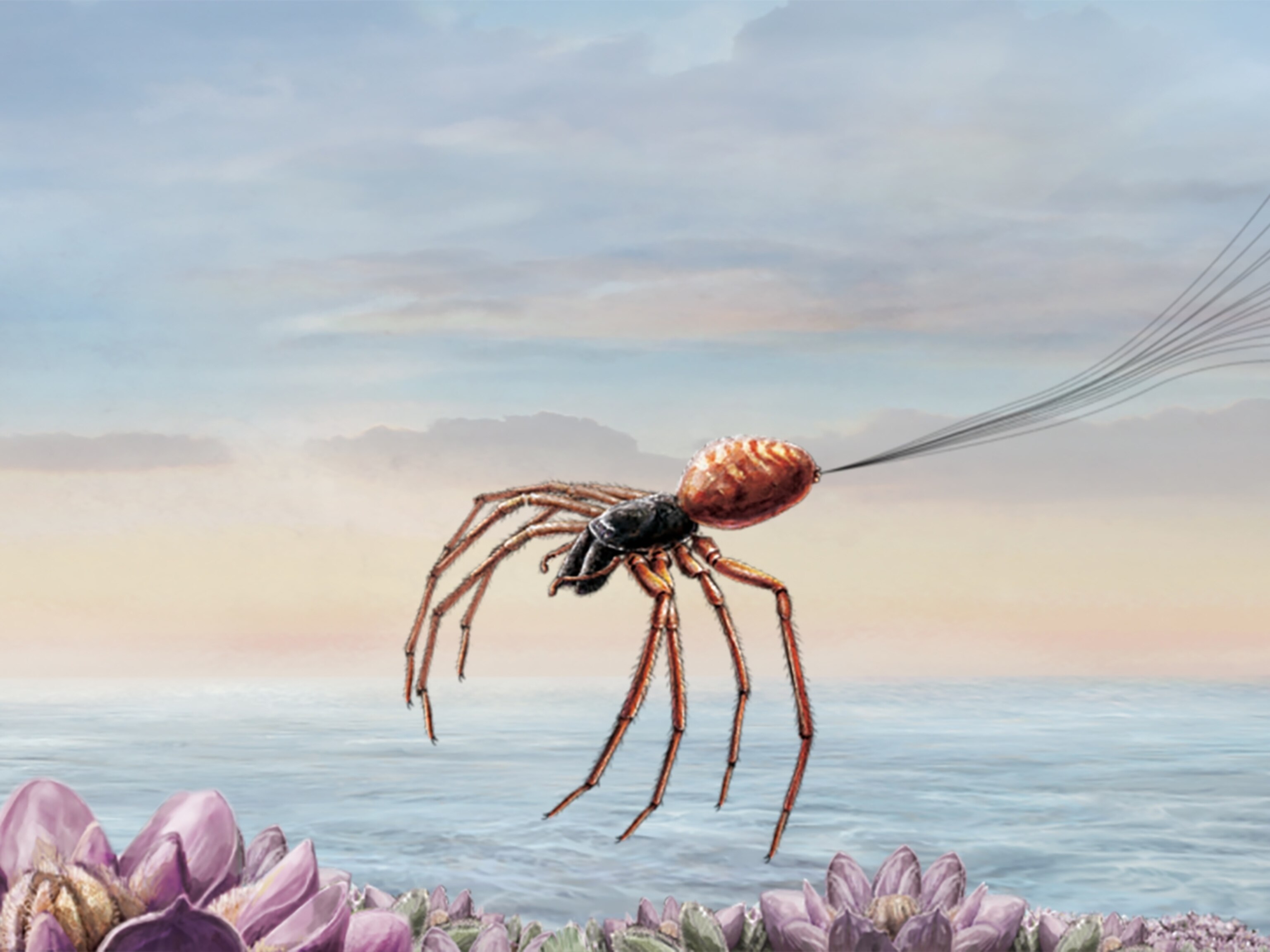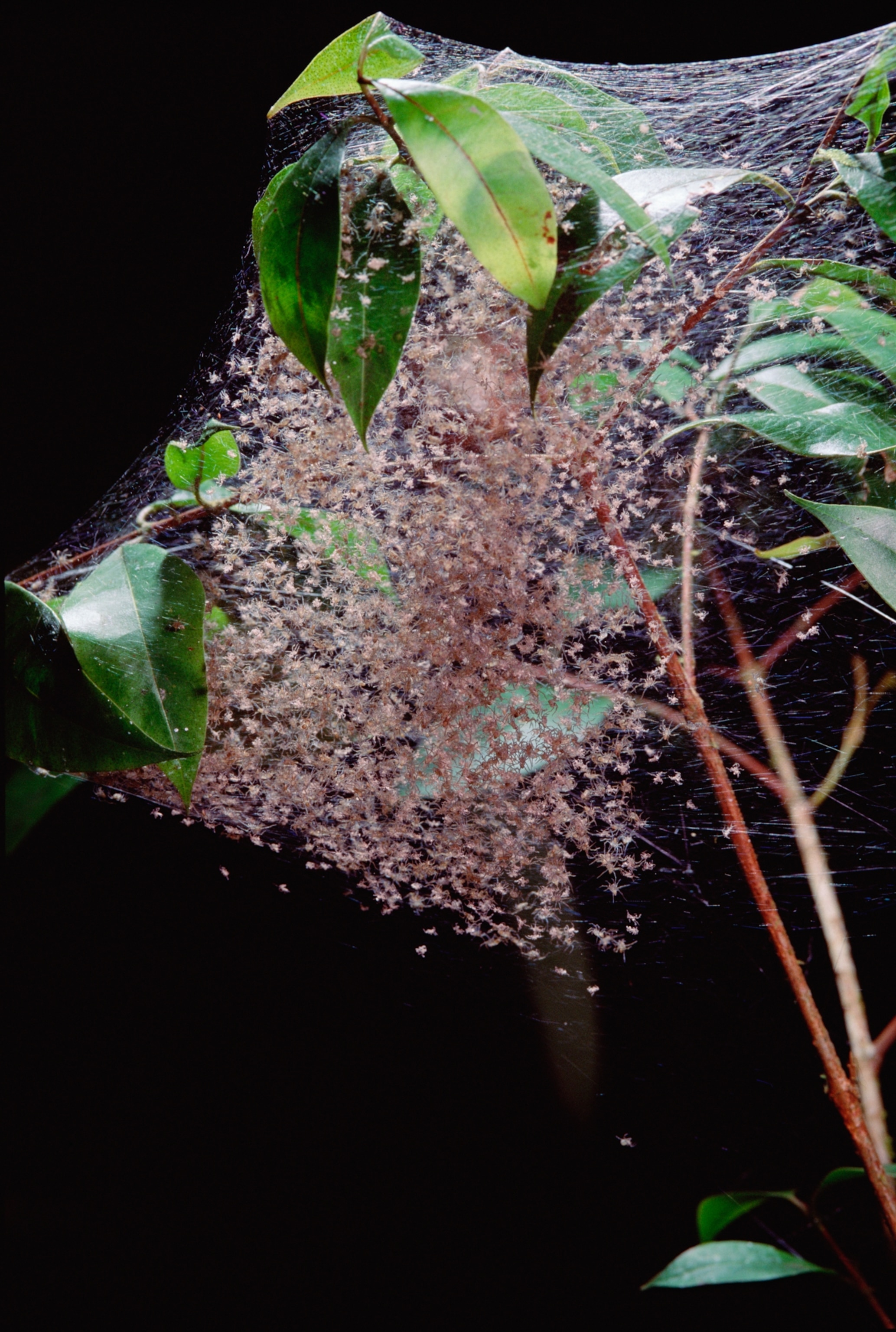
These tiny spiders perform a synchronized pop-and-lock 'dance' as they hunt
In a new discovery, South American arachnids use coordinated funky dance moves to bring down prey 700 times their size.
Take a walk in French Guiana’s tropical rainforests, and you’ll encounter giant spiderwebs longer than a school bus. Inside, thousands of tiny, quarter-inch-long spiders wait for their prey to be trapped, allowing the predators to rush to overwhelm their victims.
“In groups, they can capture prey up to 700 times [heavier] than each individual spider,” such as moths and grasshoppers, says Raphaël Jeanson, an ethologist who studies the behavior of animals in their natural environment at the Center for Integrative Biology in Toulouse, France. Anelosimus eximius is a so-called “social” spider that lives in large, cooperative colonies—an extremely rare lifestyle for spiders.
Not to worry, arachnophobes. Each amber-colored South American spider is smaller than a ladybug, and even when they’re hunting together, they pose no threat to people.
In fact, these spiders might have something to teach us as humans about working together for a shared outcome.
In a study published today in the journal Proceedings of the National Academy of Sciences, lead author Jeanson and his colleagues found these spiders capture the most prey when they synchronize their movements. More specifically, the arachnids perform a pop-and-lock-style “dance” in which each animal starts and stops quickly, and at the same time.
Of course, the spiders aren’t actually doing a funky dance; they’re feeling for vibrations, both from the insect tangled in the web and their fellow spiders on the hunt. If every spider moved to a different rhythm, it would create so much noise that they wouldn’t be able to “hear” the trapped insect. So by synchronizing their movements, the spiders sense prey more easily.
There is risk involved in this strategy: Waiting too long to coordinate movements could allow web-mates of the same species to get to the food first. But scientists found that the rewards of syncing together—accurately locating food in their giant webs—offsets that risk, encouraging this species to work cooperatively and share in the spoils.
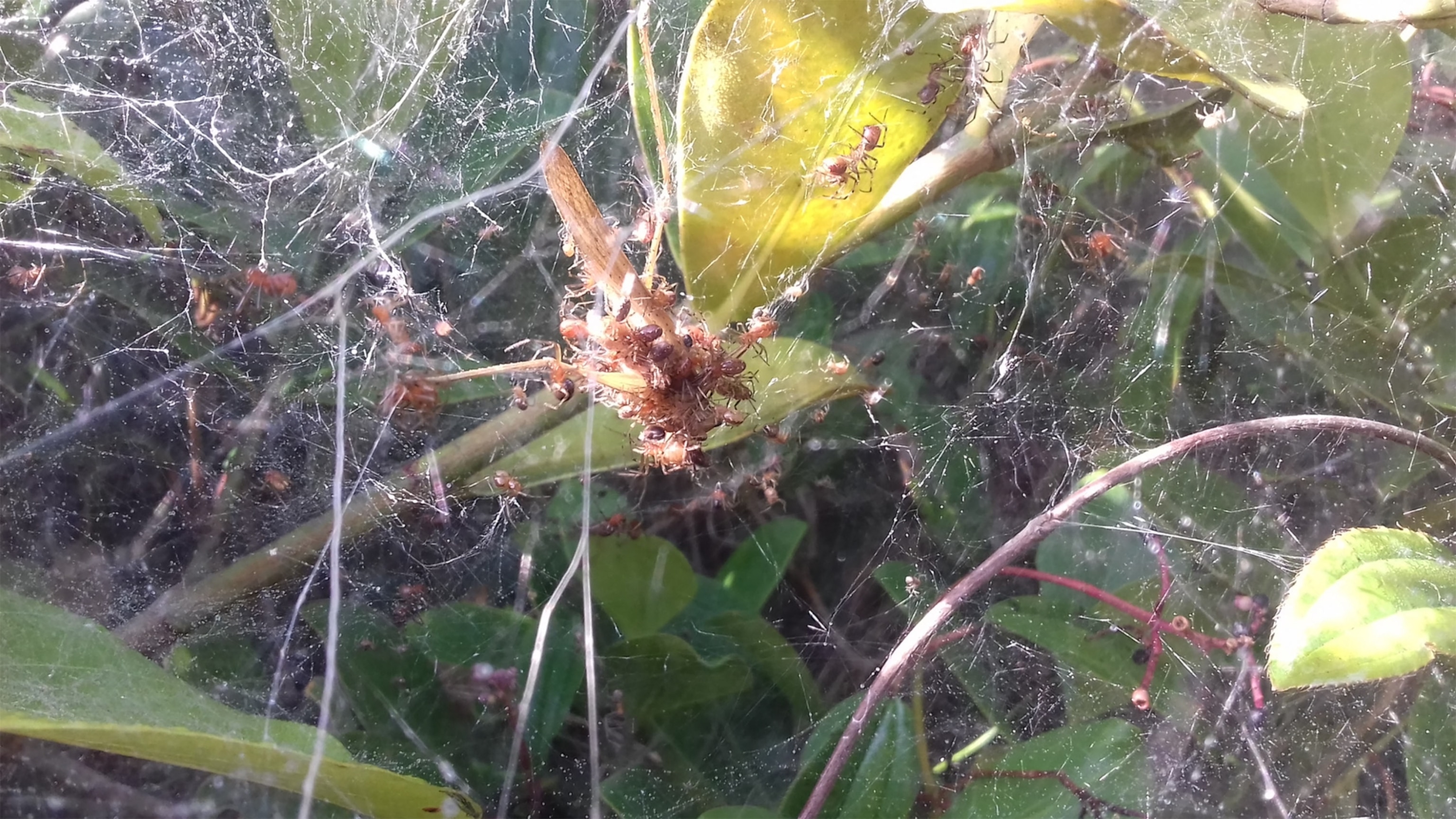
What’s more, observing the spiders’ coordination patterns may offers lesson for human engineers who are developing robots or computer programs guided by swarm intelligence, Jeanson adds.
Harmony in hunting
Only about 20 species of the 50,000 spiders known to science are live in permanent “social” cooperative colonies, and all of those are in the tropics and sub-tropics. Their behaviors include everything from taking care of each other’s young to simply living in the same web without tearing each other limb from limb. So far, A. eximius is the first to have its synchronized movements quantified, says Jeanson.
These shy animals are also rather difficult to study. Says Jeanson, “If we make too much noise around the web, they tend to hide.” (Read everything you ever wanted to know about spiderwebs.)
Finding them is easy. You can’t miss their enormous, shimmering webs along the roadsides in French Guiana, a French territory slightly smaller than the U.S. state of Indiana, located on the northeastern tip of South America. This provided Jeanson and his colleagues with plenty of opportunities to observe the social spiders in action.
To tease apart this A. eximius colony’s secrets, the scientists set up a field experiment in which they videotaped small groups of an average 25 spiders as they responded to a lure, in this case a dead horsefly attached to a motor by a wire.
The team could control the lure’s vibrations, which allowed them to measure in real-time how the arachnids responded to different variables, such as the soft, subtle vibrations of a small prey item versus the lurching of a large one. (Read about the spiders that hunt snakes.)
Researchers fed this data into a computer model to simulate more spider-hunting scenarios than could be captured from observation alone. Model data showed that by synchronizing movements, the wild spiders were more successful at catching prey than if they did not move in lock-step.
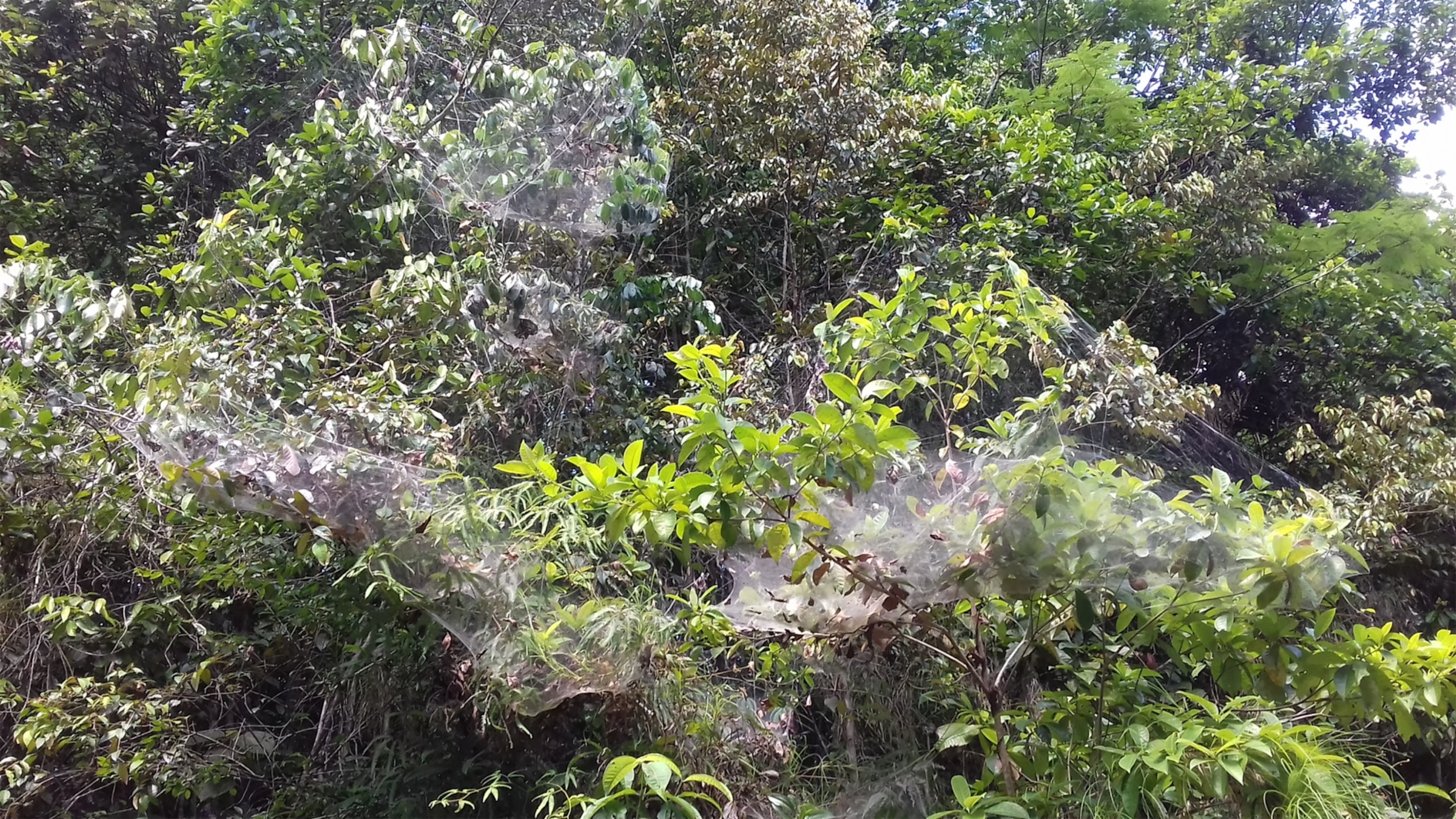
Another fascinating finding, says Jeanson, is that the spiders could tweak their behavior based on the situation. If a small insect that made softer vibrations got trapped in their web, the spiders needed to synchronize to sense it. But a large insect that made big, thrashing vibrations was loud enough that harmonizing wasn’t necessary. (Read how spider personalities determine their job performance.)
“It’s like in a room with people who are chatting,” says Jeanson. “If there is just a small, very faint noise, everybody needs to be quiet to hear it. But if there is a big explosion, you don’t need to be silent to detect it.”
Spider parents—they’re just like us
The findings raise some intriguing questions, says Lena Grinsted, an evolutionary biologist and senior lecturer at the University of Portsmouth in the U.K. who was not involved in the study.
Grinsted wonders if each spider has the same inclination toward synchronicity, or if some animals are freeloaders or cheaters—an aspect of social creatures’ behavior that’s still being studied. (See 10 beautiful photos that will make you love spiders.)
The research is a good excuse to highlight a little-known species that “defy all those stereotypes we have about spiders,” says Grinsted, who has studied social spiders in South America, Africa, Asia, and Europe.
For one, social spiders such as A. eximius are unusual in that they allow other spiders and insects to hang out in their webs.
“I tend to call them hippie spiders, because they’re just sort of docile and tolerant.”
These sociable arachnids also pod parents, looking after not only their own babies, but also the young of any spiders nearby. After a successful hunt, mother spiders also bring food back for their spiderlings.
“They’ll just sit down and regurgitate little blobs of liquid food,” says Grinsted. “Then the babies will sort of crawl up and then drink from the mouth parts of the females.” To her, “it’s just really cute.”
